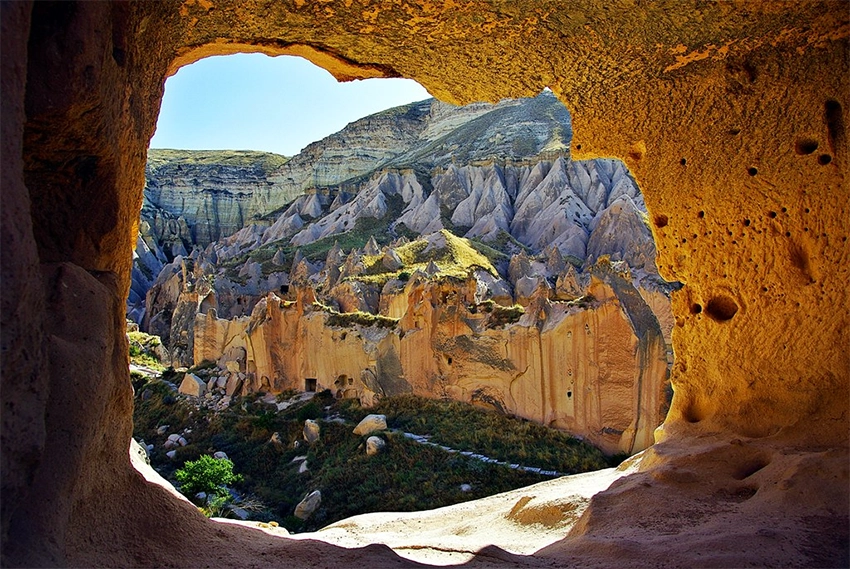Zelve Valley & Open-Air Museum
Zelve Valley and Open-Air Museum
Historical Background
Zelve is one of the earliest Christian settlements in Cappadocia. Between the 9th and 13th centuries, it was a major religious center, remembered as the site where some of the first monastic trainings took place. After the arrival of the Turks, local communities continued to live in the cave dwellings until the mid-20th century. Due to collapses in the rock formations, the last residents were relocated between 1948–1952. In 1967, the area was declared a protected site and opened to visitors as the Zelve Open-Air Museum.
The complex consists of three valleys, making it one of the most extensive open-air cave towns in the region. It is also among the places where fairy chimneys appear in their highest concentration.
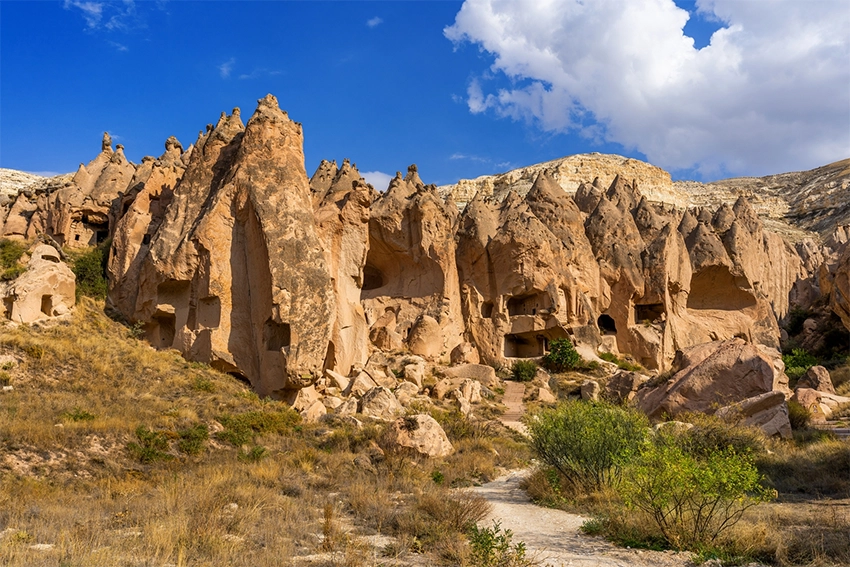
Early Cave Churches
Zelve is home to some of the oldest cave churches in Cappadocia, dating back to the pre-iconoclastic period. The most notable are Balıklı, Üzümlü, and Geyikli Churches, each named after the symbolic motifs found in their frescoes:
- Balıklı Church: Features fish symbols in the apse; the fish was a secret sign representing Christ. Its simple design reflects iconoclastic austerity.
- Üzümlü Church: Decorated with vine and grape motifs, symbolizing local viticulture and the Eucharistic wine of Christian liturgy.
- Geyikli Church: Rare depictions of deer, representing purity and the soul’s search for God.
Though modest in plan, these churches are invaluable in understanding the artistic and theological transition from the iconoclastic period to the richly painted churches of Göreme.
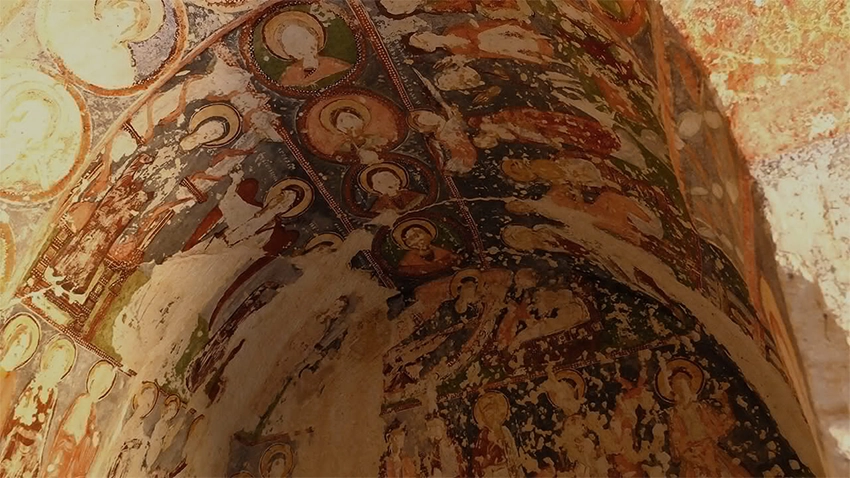
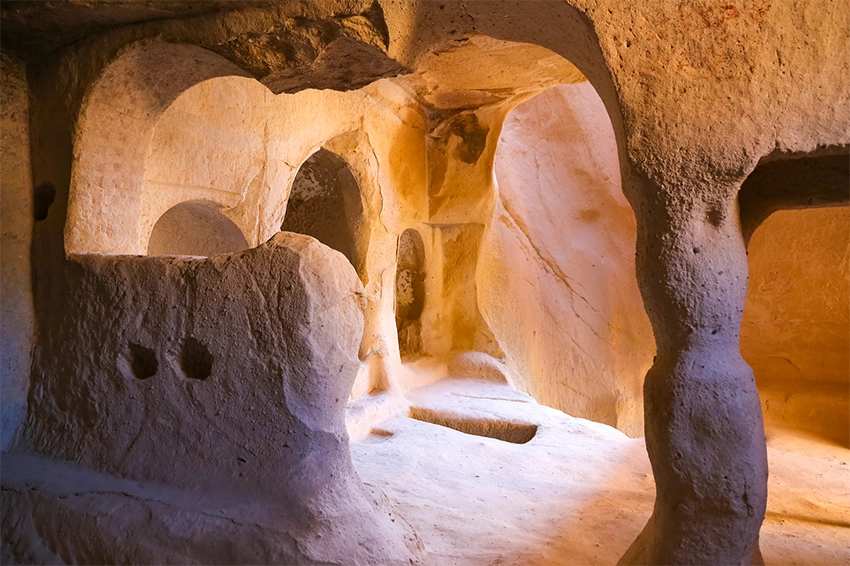
Architecture and Natural Features
Zelve Valley is defined by its striking fairy chimneys, carved by centuries of wind and rain erosion. Across its three interconnected valleys, visitors can explore rock-carved homes, chapels, dovecotes, and small cemeteries. One unique feature is the coexistence of Christian and Muslim heritage: a rock-carved structure was converted into a mosque during the Ottoman period, reflecting the area’s layered history.
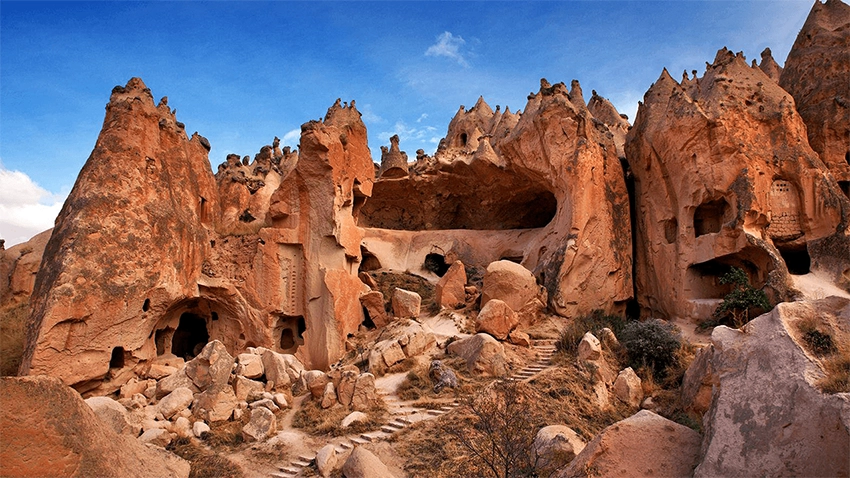
Highlights and Walking Routes
The walking trail winds through dramatic volcanic rock formations. Key highlights include:
- Rock-carved mosque with a rare baldachin-style minaret from the Ottoman era.
- Ancient water mills carved into the rock.
- Dovecotes used for collecting pigeon manure for traditional agriculture.
- A rock tunnel passage connecting sections of the valley.
- Shepherd shelters and small terraces on the upper slopes.
From various lookout points, visitors enjoy panoramic views across the valley. At night, pathways leading up to the churches offer a particularly atmospheric experience.
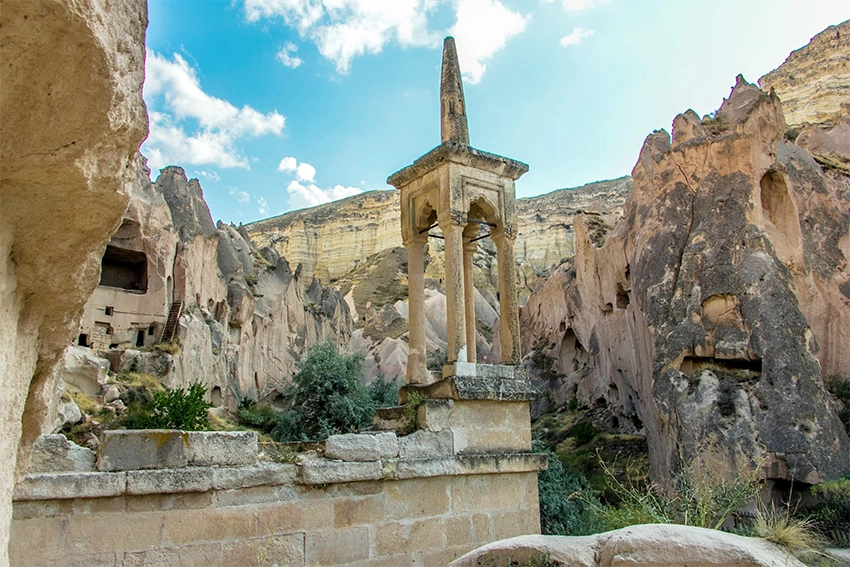
Visitor Information
- Location: Near Aktepe village on the Nevşehir–Avanos road, about 5 km from Göreme. Best reached by car, taxi, or guided tour.
- Hours: Summer 08:00–19:00; Winter 09:00–17:00. Closed at night.
- Tickets: Entrance requires a museum ticket; Museum Pass is valid. Parking fees may apply.
Practical Tips
- Wear sturdy walking shoes (paths can be uneven and slippery).
- Bring water and sun protection in summer; the valley is exposed and hot.
- In winter, expect cold winds and icy patches.
- A flashlight is useful for exploring darker interiors.
Photography and Experience Tips
- Golden Hour: Early morning or late afternoon light turns the tuff rocks vibrant orange.
- Church Interiors: Balıklı, Üzümlü, and Geyikli provide unique fresco details for close-ups.
- Panoramas: Elevated terraces give sweeping views across all three valleys.
- Night Photography: Long-exposure shots under the stars are magical—use a tripod.
